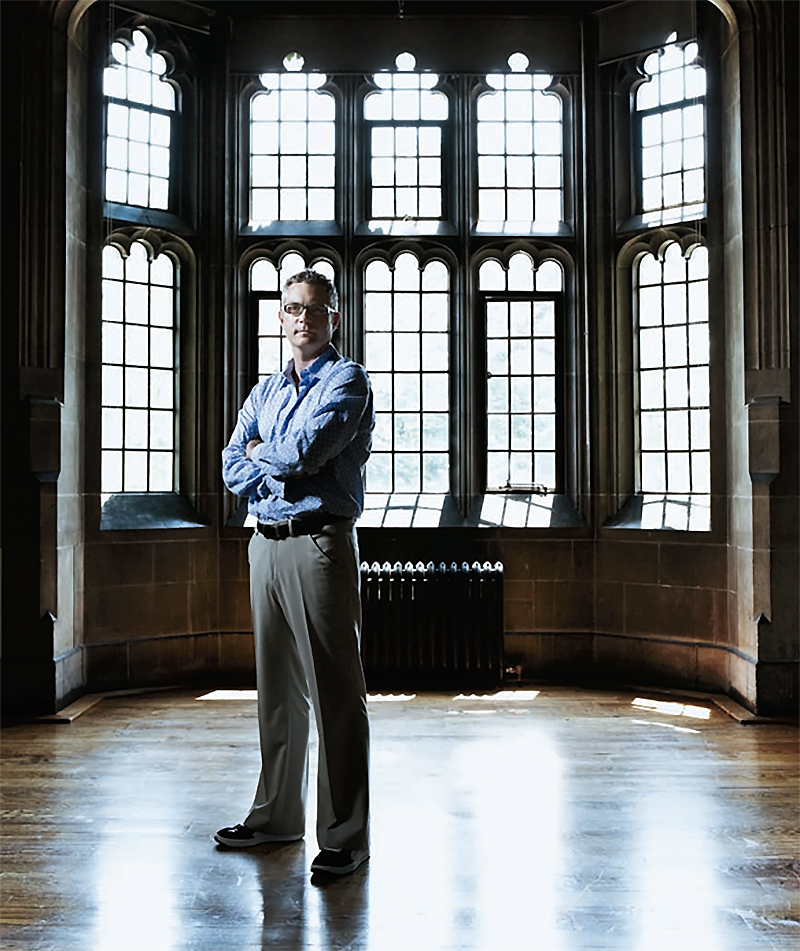Monday, July 7
Just after midnight, our motley crew of engineers and arts and science students set out for Chicago with a hand-built solar-powered car we intend to race across the U.S., following the legendary Route 66. But every entry in the American Solar Challenge must first undergo rigorous inspection to ensure it can survive the 3,700-kilometre trek. And our car isn’t working.
Wednesday, July 9
We’ve been working non-stop since 6 a.m. Tuesday. Andrew Frow (second year mechanical engineering) and Richard Lam (third year political science and biology) have completed mounting the suspension, but we still have no brakes. “The brake plates don’t fit,” says Tomek Bartczak, the team’s former chief engineer, who graduated from engineering science in 2002 and is now taking vacation days from his job to help us out. By 3 a.m. we have a plan. We wake up the University of Waterloo team to scrounge a thick sheet of aluminum and then build new brake plates in the machine shop at Northwestern.
By 4 p.m. everything is assembled. For the first time, Faust II moves under its own power. Driver Brendan Slyne (second year mechanical engineering, mechatronics option) takes the car through the figure-eight course, designed to test stability in high-G turns. The car passes on the first try.
Sunday, July 13
Under a cloudless sky, surrounded by onlookers and reporters, 20 teams line up outside Chicago’s Museum of Science and Industry. One by one we commence our journey, starting at one-minute intervals. As each team’s convoy leaves the driveway, and for many intersections afterward, a police officer stands guard, waving the racers through.
When we hit the open road, Jessica, “riding chase” behind Faust, starts calling out speed numbers over the radio: “31… 33… 36… 35… 33….” The telemetry computer has failed; we have no data on how much electricity Faust is consuming or how much we have left. Sitting in the lead van, Rajnesh Singh (second year political science and philosophy) and Tom Rodinger (a PhD student in biochemistry) take down the numbers and estimate how much energy the car is using.
We cross the Mississippi and inch through St. Louis traffic before escaping into the Missouri countryside. A state trooper tails us for 10 minutes before pulling us over by a church. “Do y’all have a permit to drive this on the road?” he asks. Jessica explains about the race. “Y’all sit tight,” he says. “I’m gonna have to call this one in.” As we fret about losing time, McGill catches up. The trooper pulls them over, too.
Thankfully, a pastor comes out to investigate the flashing lights. “I don’t know what his problem is,” he tells us. “You guys have been front-page news for days now.” The trooper lets us go.
Tuesday, July 15
We complete the second stage of the race a day early. The car can now fully recharge, which will help us count amp-hours more accurately. But the field is pretty much set. We’ve been trying to keep pace with the cars with gallium-arsenide solar arrays (which boast up to 28 per cent efficiency, versus our 17 per cent with standard silicon technology). That has now proven physically impossible. Racing for position is now over. We sit in 11th position overall, and that’s how we’ll finish.
Sunday, July 20
We cross the Mojave Desert and camp in a meteor crater in Amboy, Calif. As we talk about the incredible landscapes we’ve seen, many of us wonder why we’ve never found time to see our own country from coast to coast.
Wednesday, July 23
The race essentially ended yesterday when all the teams reached the stage stop at Barstow, Calif. Today’s final run to the Los Angeles suburb of Claremont (146 km) is too short to change the standings. Palm trees tower above as we enter Claremont. Thousands of spectators cheer the cars’ arrival. At the finish, we are surrounded by TV crews.
It will take time to comprehend what we have accomplished. We travelled more than 3,500 km across mountain and desert with a hand-built vehicle powered by the sun. As we sit in a restaurant and recall the incidents that seemed so tense at the time, the laughter begins. We share stories about each other and the race we will never forget.
Blue Sky team manager David Nam describes himself as a fifth-year philosophy student.




